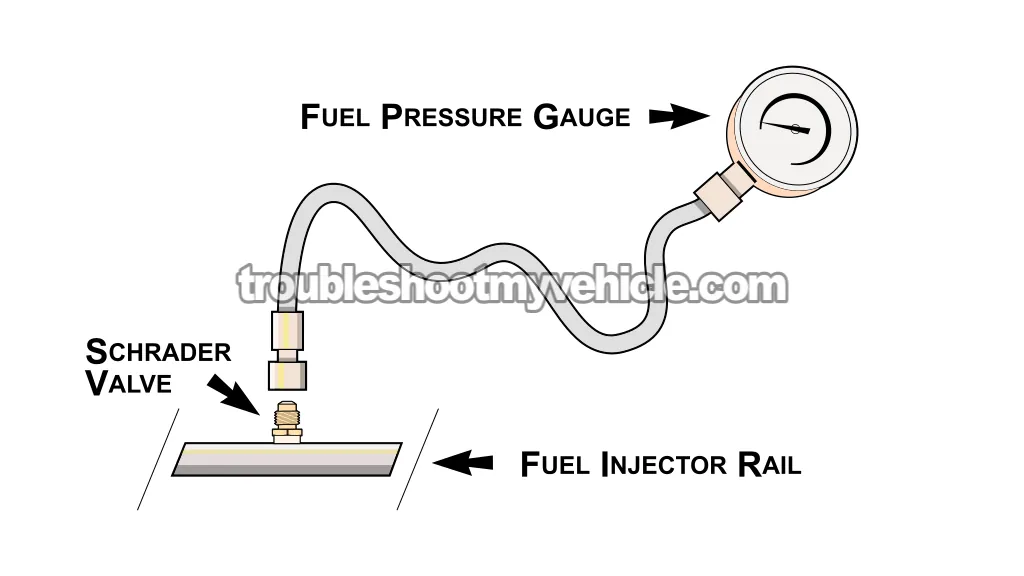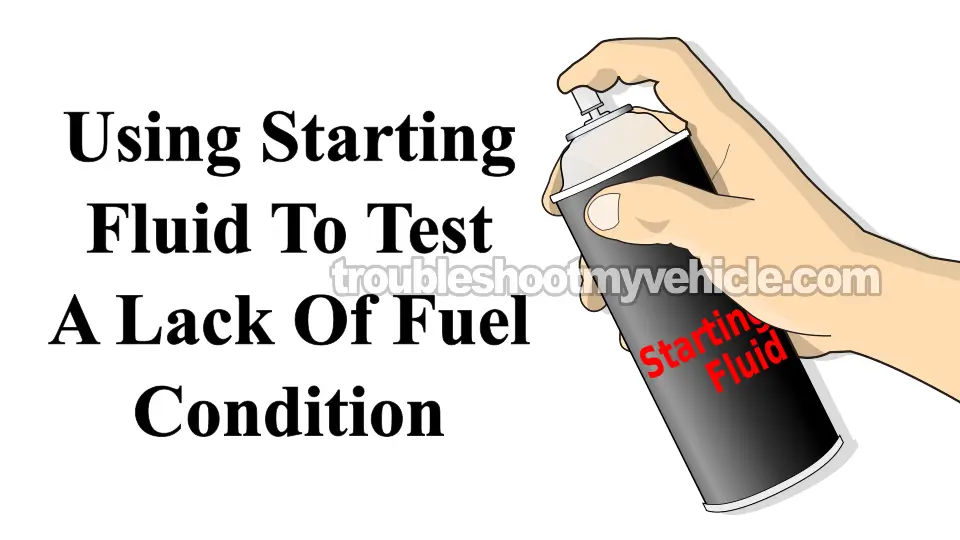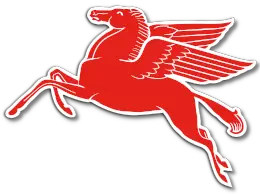
There are two methods to check to see if the fuel pump has failed. One is to use starting fluid and the other is to use a fuel pressure gauge.
In this tutorial, I'll explain both methods in detail.
Contents of this tutorial:
APPLIES TO: This tutorial applies to the following vehicles:
- 4.7L V8 Jeep Grand Cherokee: 1999, 2000, 2001, 2002, 2003, 2004.
Symptoms Of A Bad Fuel Pump
Fuel pump failures fall into two categories:
- Total fuel pump failure that cause the engine to crank but not start.
- Failing fuel pump that still works and is able to start the engine, but doesn't send enough fuel volume to the fuel injectors (provoking a lean air/fuel mixture and a lack of power).
To delve into the specific symptoms of a total fuel pump failure, you'll see:
- The engine turns over but won't start.
- All 8 ignition coils are creating/delivering spark to the cylinders.
- The PCM will still pulse (activate) all 8 fuel injectors.
When a fuel pump still works, but doesn't send enough fuel to the fuel injectors, you'll see one or more of the following symptoms:
- Rough idle.
- Engine starts after extended cranking.
- Lack of power when accelerating the vehicle down the road.
- Back-fires thru' the intake manifold when accelerating the vehicle down the road.
Both of these conditions can be tested with a fuel pressure gauge. Alright, with this info under our belts, let's get testing.
Where To Buy A Fuel Pressure Test Gauge
You can buy a fuel pressure test gauge just about anywhere and is one of the most important tools any serious DIY'er should have in his/her tool box.
The following fuel pressure test gauge kits will connect to your Grand Cherokee (and also include the adapter to tests all Ford with a Ford-type Schrader valve):
Disclosure: As an Amazon Associate, I earn from qualifying purchases. If my tutorials help you, using these links is an easy way to support the site at no extra cost to you. Thank you!
NOTE: All of the fuel pump pressure test kits above will connect to your 4.7L Jeep's Schrader valve.
TEST 1: Checking Fuel Pressure With A Fuel Pressure Gauge

Whether the fuel pump has stopped pumping fuel completely or is pumping just enough to start the engine, checking it with a fuel pressure gauge is the most accurate way.
The engine, in your 4.7L Jeep, comes equipped with a fuel pressure test gauge test port called a Schrader valve. It's to this Schrader valve, located on the fuel injector rail, that we can connect the fuel pressure test gauge to.
NOTE: If you don't have a fuel pressure gauge, take a look at the section: Where To Buy A Fuel Pressure Test Gauge.
OK, let's get started with this test:
- 1
Place a shop towel around the Schrader valve. The shop towel's job is to catch any fuel that may leak when you move on to step 2.
- 2
Connect the fuel pressure gauge to the Schrader valve on your 4.7L Jeep's fuel injector rail (you'll find it on the passenger side of the fuel rail).
- 3
Check for fuel leaks: Have your helper cycle the key ON and OFF several times (without cranking the engine) while you watch the fuel pressure gauge.
Look closely at the Schrader valve connection for any leaks. If you see fuel seeping out, tighten the fuel pressure connection a bit more (by hand only) to stop the leak. - 4
Crank and start the engine.
NOTE: If the engine doesn't start, crank it and then release the key so it stays in the ON position (even though the engine didn't start) —don't switch the key OFF. - 5
Your fuel pressure gauge should read between 44.2 to 54.2 PSI with the Key On Engine Off (KOEO) if the fuel pump is working correctly.
Let's take a look at what your results mean:
CASE 1: The fuel pressure gauge registered 0 PSI. This confirms that your 4.7L Jeep Grand Cherokee's no-start problem is due to a lack of fuel.
I usually take one more precaution before condemning the fuel pump as bad, and that is to check that the pump is actually getting 12 Volts while the engine is cranking. This step makes sure the fuel pump relay and fuse are OK and doing their job.
To do this, connect a multimeter (in Volts DC mode) to the wire that supplies power to the fuel pump. Then, while a helper cranks the engine, verify that the pump is receiving 12 Volts. If it is, you've 100% confirmed the fuel pump is fried and needs to be replaced.
CASE 2: The fuel pressure gauge registered lower than specified fuel pressure. This tells you the fuel pump is weak and failing. Replace the pump.
CASE 3: The fuel pressure gauge registered the specified fuel pressure. This means the fuel pump is working and delivering enough fuel to the injectors.
If the engine still won't start, or if you're chasing a performance issue, then the problem lies elsewhere —not with the fuel pump.
TEST 2: Using Starting Fluid To Confirm Lack Of Fuel

Using starting fluid to check for a lack-of-fuel condition is one of the most common tests done in auto repair shops when diagnosing an engine no-start (it's also my go-to test).
It's quick, easy, and a good first step when suspecting a bad fuel pump. That said, it's not the most accurate way to confirm a bad fuel pump.
The key thing to remember is that this test only works if you've already confirmed that all the ignition coils are producing and delivering spark.
The rule of thumb is simple: if spraying starting fluid makes your 4.7L Jeep Grand Cherokee start, even momentarily, then fuel is missing from the equation (engine start equation: fuel + spark + air = combustion).
IMPORTANT: This is a very fast and easy test but you do have to take one very important safety precaution and this is to reconnect the air intake duct after spraying starting fluid down the throttle bore (although you don't have to fasten it). This will prevent any backfire, that might occur, from scaring the heck out of you when cranking the engine.
This is what you have to do:
- 1
Remove the intake air duct from the throttle body. You don't have to take it completely off, since you'll be reconnecting it in one of the next steps.
- 2
Open the throttle plate and spray starting fluid into the bore.
- 3
Reconnect the air duct. There's no need to tighten the hose clamp just yet.
NOTE: This is an important safety step in case of a backfire through the intake manifold. - 4
Crank the engine while standing at a safe distance.
- 5
You'll see one of two results:
1.) The engine will start momentarily and then stall after a few seconds, or
2.) The engine will only crank and not start at all.
OK, let's find out what your results mean:
CASE 1: If the engine started and ran for a few seconds. This test result tells you that the no-start problem is due to a lack of fuel.
Your next step is to check to see what the fuel pressure is with a fuel pressure test gauge. Go to: TEST 1: Checking Fuel Pressure With A Fuel Pressure Gauge.
CASE 2: The engine did not start, not even momentarily. This usually means that a lack of fuel IS NOT the reason your car is not starting.
Now, remember what I said about this test not being very accurate? Well, I suggest you do one more test and this is to check the fuel pressure with a fuel pressure test gauge. Go to: TEST 1: Checking Fuel Pressure With A Fuel Pressure Gauge.
Where To Buy The Fuel Pump And Save
The fuel pump in your 4.7L Jeep Grand Cherokee is located inside the fuel tank. The fuel pump can be bought in any auto parts store, but I think you'll find the better price online. The following fuel pumps are pretty good deals:
Disclosure: As an Amazon Associate, I earn from qualifying purchases. If my tutorials help you, using these links is an easy way to support the site at no extra cost to you. Thank you!
NOTE: Not sure if the above fuel pumps fit your particular 4.7L Jeep Grand Cherokee? Don't worry, once you get to the site, they'll make sure it fits by asking you the specifics of your vehicle. If it doesn't fit, they'll find you the right one.
More 4.7L V8 Jeep Grand Cherokee Diagnostic Tutorials
You can find a complete list of 4.7L V8 Jeep Grand Cherokee tutorials in this index:

If this info saved the day, buy me a beer!








